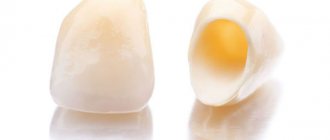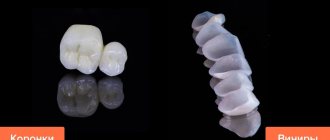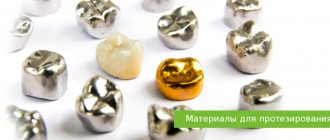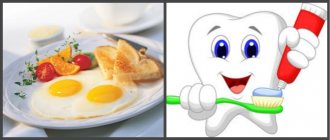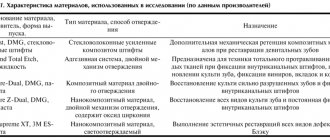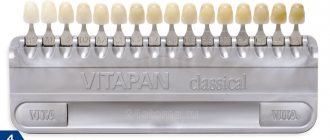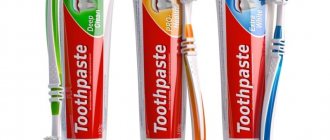What is a filling? This is a special composition that is used to fill damaged or prepared canals and voids in the tooth to prevent foreign substances from entering them.
There are several types of fillings in dentistry. Some of them are called temporary because they are installed at an intermediate stage of treatment. The main property of such a filling is that it can be easily removed. Accordingly, it is made from inexpensive materials so that the cost is affordable for any patient.
It is noteworthy that a temporary filling allows you to find a thorough approach to treatment in a short period of time. This happens when a person has deep caries. After all, if you immediately install a permanent structure, the boundary between the pulp chamber and the tooth tissues with the nerve bundle will become even thinner, and the process can develop into pulpitis. This leads to the need for root canal treatment, which is much longer and more difficult.
Process steps
When visiting a doctor, a thin gasket is installed, which must be removed after a strictly allotted time. At the same stage, the dentist should explain to the patient how long he can walk with a temporary filling. Installing such a gasket allows you to observe the tooth, and if it continues to hurt, then this is a sign that it is necessary to change tactics.
In case of pulpitis , a temporary filling is installed; only the dentist decides how long you can walk with it . Before making it, the doctor must open the tooth chamber and clean it thoroughly. Then medications containing arsenic are placed to relieve inflammation of the nerves in the dental chamber. This action also allows you to clean the canals painlessly.
If a patient has a toothache with a temporary filling and medication , this indicates that the nerve bundle has not yet been killed. Typically, such a structure is removed a couple of days after installation. If the nerve is removed, then you can do without arsenic. However, before this, the dentist must remove all nerve bundles and treat the dental chamber with medication. The question of how long a temporary filling lasts is often of interest to many patients. If all the rules are followed, anyone can be sure that it will serve him for the necessary time until the doctor decides to remove it. As for eating, you are allowed to eat within a couple of hours after visiting the doctor.
Types of temporary fillings
You cannot do without a temporary filling in the following cases:
- For conservative treatment of not too advanced pulpitis and advanced caries. After drilling out the inflammatory focus and treating the root canals, the tooth cavity is filled with anti-inflammatory drugs, and a filling is placed on top. This is necessary so that the drug does not leak out and that microbes and pieces of food do not get into the diseased tooth.
- For diagnosis in deep caries, when it is unclear whether the nerve is affected. They put a filling with medicine and watch the tooth - if it continues to hurt, most likely it is pulpitis.
- In the treatment of pulpitis, if there is a need to remove the nerve. Then the treatment is carried out in 2 steps: first, a filling is placed with arsenic or other, more gentle devitalizing drugs, and after the death of the nerve, treatment is carried out.
- For prosthetics and restoration to protect teeth while permanent structures are being made.
Installing a temporary filling is absolutely safe, except in cases where individual allergic reactions to filling materials are observed.
Acute periodontitis
If a patient is diagnosed with acute periodontitis, he will have to visit the dentist more than once. During the first appointment, the doctor must examine the problem, take an x-ray and open the chamber of the tooth. It is also necessary to clean the channels inside it using antiseptic solutions. At home, the patient is required to rinse to remove all contaminants from the canals and dental chamber.
When you visit the doctor again, the canals are washed again, after which they are filled with medicine. And at this moment they put a filling. If you need a temporary filling, you can buy it at the pharmacy, but it is better to trust the doctor’s choice. When all the pain goes away, he can perform this procedure in your mouth.
Remember that a temporary filling is an important detail on which the entire treatment depends. Therefore, the doctor must select and install it himself.
Arsenic-free pastes
With pastes without arsenic, the situation is much simpler: even with prolonged use, periodontitis does not occur so quickly, although you should not exceed the time prescribed by the doctor!
Arsenic-free pastes are even used to treat children. Thus, the treatment is intermittent and the child does not have to stay in the chair for a long time. And also, which is very important, it is possible to do without injections.
For the adult population, root canal treatment is successfully carried out under anesthesia, on average in 1-3 visits, depending on the complexity of the situation.
How long will such a unit last?
We have dealt with the question of why a temporary filling is placed , but many patients are interested in its service life. It can be several days or several weeks. This is due to the fact that different drugs are used while wearing it. If the patient feels that a tooth with a temporary filling hurts , then he will have to wear it longer than what was originally prescribed by the doctor.
Situations where product life varies:
- To kill the nerve, the seal is worn for about 3 days, and if perfume paste is used instead of arsenic, the period increases by 5-10 days.
- if the filling is used to treat deep caries with the help of antiseptics and antibiotics, then it is worn from 4 days to several weeks.
- in particularly advanced cases, such a filling can remain in a person’s mouth for 3 to 6 months.
If the patient cannot visit the doctor, then he must notify him in advance. Then the doctor will have to install a reflective durable filling, which will be worn for several months. As soon as a temporary filling falls out , you need to run to a specialist immediately, otherwise you will be in big trouble.
Choosing temporary filling material: proceed without mistakes
Every practicing dentist knows how important the correct selection of filling material is for effective treatment. Modern dentistry offers a huge selection of materials, which are divided into classifications depending on composition, properties, time of use, purpose, etc. A fairly large place among them is occupied by a group of filling materials for temporary fillings, as well as insulating and therapeutic pads.
Materials for temporary fillings
Based on the time of action, they are divided into bandages and temporary fillings. Inexpensive materials are used for dressings. The most common option: water-based dentin or dentin-paste. The period of use of these materials should not exceed 14 days. At the same time, the bandages do not differ in aesthetics and durability. All temporary fillings are cements : zinc phosphate, zinc eugenol, polycarboxylate, glass ionomer, etc. The period of their use in the patient’s oral cavity ranges from several weeks to six months.
1) Zinc sulfate cements (“artificial dentin”)
The main components of the composition are zinc sulfate and zinc oxide. Adding water helps the mass harden. The most famous materials of this group: “Dentin for dressings”, Dentine paste, Vinoxol, etc.
2) Zinc-eugenol cements
The basis of the composition is zinc oxide and eugenol. According to Smith's classification (1996), this subgroup includes three main types of cements: simple zinc oxide eugenol; reinforced zinc oxide eugenol with filler and cements based on orthoethoxybenzoic acid (EBA). The materials consist of zinc oxide powder, into which 1-2% zinc acetate, acetic anhydride or rosin are added, which accelerate hardening. Purified eugenol or clove oil is used as a solvent. Additionally, to speed up the hardening process of cement, acetic acid or 1% ethyl alcohol, as well as a small amount of water, can sometimes be added. The most popular representative of this group is Cariosan. Zinc-eugenol cements are used not only for temporary fillings , but also for therapeutic linings. It is important to take into account that eugenol disrupts the polymerization process of composites, so experts do not recommend using this type of cement in combination with them. That is why today zinc-eugenol cements are practically not used for therapeutic linings in commercial clinics, but they are still in demand in pediatric dentistry and in municipal clinics for the treatment of deep caries in two visits.
3) Zinc phosphate cements
75-90% of the cement base is zinc oxide with the addition of other modifying oxides. The liquid part is an aqueous solution of 38-44% orthophosphoric acid containing phosphates of zinc, aluminum, magnesium, etc. Among the most famous zinc-phosphate cements presented on the Russian market are: Phosphate cement from Raduga-R, Uniface ( “Medpolymer”), Adgesor (“Dental Spofa”), DeTreyZinc from “DeTrey/Dentsply”, etc. As a rule, metals containing silver are added to these compositions to impart a bactericidal effect. As an example, we can o), Phosphate with silver and bactericidal Foscin (“Rainbow-R”), as well as cements containing bismuth oxides: Visphate cement and Dioxyphosphate (Medpolymer).
The undoubted positive properties of these cements are: ease of use, low thermal conductivity, good X-ray contrast, and impermeability to acids and monomers. However, they have quite a lot of negative characteristics. Among them: weak adhesion, low resistance to the aggressive effects of saliva, shrinkage, low mechanical strength, the presence of free acid and lack of aesthetics.
Most often, zinc-phosphate cements are used as an insulating spacer for filling baby teeth and permanent crowns, fixing cast stump inlays, pins, crowns and bridges.
4) Polycarboxylate cements
The basis of cement is thermochemically treated zinc oxide with the addition of magnesium oxide, which reduces the reactivity of the first component. Aluminum is also often added to powders. The solvent is represented by a 32-42% aqueous solution of polyacrylic acid. During the hardening process, cement turns into an amorphous zinc-polyacrylate gel, which contains zinc oxide particles.
The positive properties of these cements include: satisfactory chemical adhesion to enamel and dentin, strong bond with metals, weak toxicity to the pulp compared to phosphate cement and high biocompatibility with tooth tissues. Negative properties: high solubility under the influence of saliva, short formation time in the oral cavity and insufficient fluoride adhesion.
Polycarboxylate cements are used as insulating spacers when filling teeth under artificial crowns, for fixing orthopedic and orthodontic structures, and in the treatment of baby teeth (1-2 years before their replacement).
All materials for temporary fillings must be:
- harmless to the pulp;
- have high plasticity;
- inactive for other drugs;
- insoluble under the influence of saliva;
- sealed for at least two weeks;
- have a certain strength;
- easily removed from the dental cavity using an excavator, probe or drilling.
Insulating and healing pads
The purpose of these materials follows from their name. Despite the fact that they can be conditionally classified as filling materials, the application of gaskets is an integral step in the treatment of medium and deep caries. spacers when treating medium and deep caries . They contain calcium hydroxide, which has an anti-inflammatory effect on the pulp and stimulates the deposition of replacement dentin. Among the most popular materials are: “Calmecin”, “Dycal”, “Calcimol” and “Alcaliner”, as well as modern insulating gaskets made from glass ionomer cements, such as: “Fuji 2”, “Chelon Fil”, “Base Line” and etc.
Today the following requirements apply to insulating gaskets:
- reliably protect dentin from chemical and temperature irritants;
- easy to install;
- withstand the effects of saliva when the filling is damaged;
- withstand chewing load;
- have good adhesion to tooth tissues;
- do not have an aggressive effect on the dental pulp;
- do not affect the color of tooth enamel.
Therapeutic pads have an anti-inflammatory, regenerating and analgesic effect, therefore they are used in the treatment of deep caries. They are characterized by good ductility, the material hardens quickly. Basically, the therapeutic component of modern medical pads is calcium hydroxide, which has a bactericidal effect and shifts the pH environment in the tooth cavity to the alkaline side, which ensures neutralization of acids. The base material can be polymer, water-based, oil-based or monomeric. Dentists use either ready-made medicinal pads or prepare them themselves. The use of a therapeutic pad significantly reduces the risk of the formation of microcracks and the development of secondary caries. However, with all their advantages and positive effects on the pulp, these compositions have noticeable disadvantages:
- low adhesion to dentin, which determines the weak adhesion of the filling to the tooth tissues;
- lack of resistance to the aggressive effects of saliva, which creates conditions for further infection;
- accidental contact of gasket particles with the walls of the formed cavity can lead to secondary caries.
It is recommended to apply therapeutic pads in cases where the bottom of the formed cavity is located too close to the pulp. It is believed that in order to prevent infection of the pulp by toxins, the minimum thickness of the dentin layer should be 2 mm. When placed correctly, the therapeutic material completely covers the bottom of the carious cavity or lies pointwise in the areas where the pulp horns adjoin. In this case, it is necessary to carefully remove it from the walls of the cavity in order to avoid disruption of the adhesion of the filling material and the development of secondary caries.
Regardless of their purpose, all temporary filling materials must meet the same clinical requirements:
- do not have a toxic effect on the enamel, dentin and pulp of the tooth, as well as mucous membranes;
- be harmless to the body as a whole;
- have antiseptic, anti-inflammatory and anti-caries effects;
- be chemically inert and resistant to aggressive environments such as alkalis and acids;
- have sufficient adhesion to dental tissues, mechanical strength and wear resistance;
- do not change the color of the tooth and do not lose its original color over time;
- do not cause the appearance of galvanic currents in the oral cavity;
- do not change shape and volume during hardening;
- have good radiopacity.
For an experienced specialist, purchasing filling material, like any other dental consumable, usually does not cause any particular difficulties. However, the dental market, being one of the most dynamic and rapidly developing areas of global business, is constantly changing, which makes it difficult to keep track of new products and truly profitable offers in a timely manner. Today, the marketplace of the Internet portal “Dentists Club” is rightfully considered one of the most reliable and positively proven resources. This aggregator has been successfully operating in the dental market since 2017 and has already proven itself as a proven and honest partner. At the same time, the Dentist Club market is the only aggregator of offers in the field of dentistry today, which allows you not only to purchase the necessary goods at the guaranteed best prices, but also in addition to receive a cashback of 1.5% back to your account!
What other benefits does the Dentist Club market provide?
1. Time saving
- You don’t need to go to all the search results sites to find what you need
- There is no need to call companies and try to explain to them over the phone what you need
- No need to send a request and wait for managers of trading companies to answer or call you back
2. The Dentist Club Market service helps when communicating with doctors
- You can easily find the desired product by description and photo
- Determine the desired model and its modification
- Check all these parameters directly with your doctor and get his approval
- Place an order in one click.
3. Lowest prices on the market guaranteed
- You can simultaneously see the prices of all companies offering the required product
- Compare the prices presented and choose the most profitable one
- The manager of the selected company will call you back. He doesn’t need to explain ten times what you need, because... He sees all the necessary information in the generated order.
- And don't forget about cashback!
4. 100% order security
- Absolutely all companies - suppliers of dental equipment and consumables, collaborating with the marketplace, have already been checked for legal purity by lawyers of the Dentists Club. That is why all purchases made on the Dentists Club market are absolutely reliable!
5. Ease of use
- You can install the Dentist Club Market service on your phone so that it is always at hand. Open the app, find the products you need, and order. Everything is quick, accessible and simple. Application in the App Store on iPhone (iOS) or on Google Play for Android.
Aida Levasheva – senior nurse at the dental clinic (Samara):
“To be honest, purchasing dental supplies was my least favorite job until recently. I do not have a dental education, and until recently this created certain difficulties. Of course, before purchasing, I asked doctors what material was more convenient for them to work with. The problem was that everyone had their own preferences. I had to search for what I needed all over the Internet, compare prices, and call managers of trading companies for half a day to find out the terms of payment and delivery. This often took almost the entire working day. And in the end, the head physician, looking at the list and prices, crossed out half of the points. The Dentist Club Market was recommended to me by one of my classmates at medical school. I really liked the resource. For me, the most important thing is a very convenient and simple interface, which you can easily understand even without a dental education. I especially liked the function where you can compare prices for the desired product! If you need professional advice, you can get it directly on the website and immediately pay for your order there. All this is very convenient and saves a lot of time!”
Go to Market >>>
Problems associated with installing a temporary filling
- Painful sensations. They can be caused by a poorly killed nerve, infection, or tissue inflammation. Sometimes patients experience allergic reactions, which can also lead to pain.
- The filling falls out or crumbles. In these situations, it is necessary to urgently consult your doctor. He will need another the patient should already know why it is placed If this is not done, an infection may get inside the tooth chamber, which will lead to dire consequences.
- Having an unpleasant taste in the mouth. This is due to the fact that during the installation of the filling, medications with a pronounced aftertaste are used. When it is particularly strong, this may indicate that the structure is cracked. Therefore, it will never be a bad idea to see a doctor.
- Darkening of the filling or swelling of the gums are bad signs that require urgent medical intervention.
In order to avoid such problems, you must follow all the recommendations of a specialist. If you have you should know very well how much you can’t eat, Therefore, under no circumstances should you eat food ahead of schedule. And under no circumstances should you pick apart a recently installed structure.
Precautions to help you wear a temporary filling according to all the rules
How long a temporary filling can last depends on the patient. Therefore, in order to carry it for a long time, you must follow the following rules:
- Buy a brush with soft bristles. Teeth brushing is done twice a day. The use of mouth rinses is not prohibited.
- It is advisable not to chew gum or eat anything hard on the side where the filling is located. If a tooth itches under a temporary filling, this indicates that the nerve bundle is dying. You should not scratch your gums at this time.
- If pain occurs under the filling, rinse your mouth with tinctures of chamomile and sage; you can take painkillers as a drastic remedy. But you should stop using aspirin, because it is harmful to the stomach.
- A temporary filling is a treatment method that does not require many restrictions from the patient. If we talk about food, then you should take it no earlier than 2-3 hours after visiting the doctor. Because, unlike reflective fillings, temporary fillings take much longer to harden, and eating can deform them. You need to be patient for several hours so as not to regret the result later.
You need to know that cannot be installed at home Because this procedure requires skills, experience and special equipment. Even after visiting dental clinics, sometimes it happens that the tooth under the temporary filling hurts , which requires visiting a doctor. It is advisable to choose only those clinics that have proven themselves positively and have a good reputation.
If you have a temporary filling that falls out, you don’t need to think about what to do, because you need to immediately go to the doctor. Only he will be able to eliminate all the consequences and install a new structure in accordance with the standards.
Visit the dentist on time, and then you will not have to treat your teeth for a long time. After all, prevention is an effective way to make your smile healthy.
Problems when wearing temporary dental fillings
Sometimes it happens that a temporary filling is too soft, then it needs to be changed so as not to disturb the chewing process. It happens that a temporary filling crumbles, tastes bitter, has an unpleasant taste in the mouth, or the tooth hurts when pressed - these are also reasons for premature removal. But the most dangerous situation is when the filling falls out. If you have any concerns about filling, you should contact your dentist.
Cementing with arsenic is becoming less common due to the unsafety of this method. Light-curing pastes dry instantly, have a natural color and do not harm the body, and they can be installed for 15-20 Euros.
You can get even more information at a free consultation at dental clinics in Estonia, a full list of which is presented on our website.
